
The Ocun Spirit is a great all-round single rope for sport climbing, top-roping and trad climbing. Despite its relatively skinny diameter at 9.5mm, over months of sustained use it has proved to be durable and continues to handle very smoothly. When I'm looking for a single rope I have three criteria which are all related and affect each other: durability, handling and weight. How did the Spirit hold up?
Durability
To put things in to perspective, 9.5mm is quite skinny for a single rope, skinnier in fact than the ropes we tested in our Midrange Sport Ropes group test. However, I held the Spirit to the same standards and I used it in the way that most climbers would use a single rope: I used it for climbing down the wall over the winter, for sport climbing in Spain and in the UK, for top-roping and for the occasional trad pitch. This included hundreds of pitches climbed, lots of falls taken, and being dragged through the dust of many Spanish sport crags.
All in all the Spirit has worn very well for quite a skinny rope. The rope as a whole is in great condition and looks almost new: with the 'pinch test' you can tell that's there's still lots of life left, there are no unexpected burrs or nicks, and the rope is still its lovely bright pink colour, having avoided taking on a lot of dirt or dust during its use. As can be expected after months of use there are sections of rope closer to the ends, the parts which form your tie-in knot, which are getting a bit fluffier. Using the pinch test I can tell that these areas will probably need chopping off after another month or so of use, but this kind of wear is to be expected and it is not found in any unusual places. In short, the Spirit has worn well for a 9.5mm rope and I expect to get a lot more use out of it, even if I do need to make it slightly shorter.
Handling
Straight out of the box (well, once I'd straightened the rope out from the factory coiling), the Spirit has handled extremely well. It glides excellently through a belay device, whether that's a GriGri, ClickUp or regular ATC, which means it's a pleasure to use and doesn't cause any unnecessary drag or short roping. It is smooth to use but not to the extent of being slippery, there is enough friction to feel secure when belaying with it. A skinnier rope will usually handle better than a fatter rope, as it's lighter and has less contact with the belay device, so the Spirit has an advantage here, but the weave and finish on the outside of the rope certianly seem to help. I have actually had a few climbing partners comment on how nice the Spirit is to use.
A factor which can affect handling is how worn a rope is getting. If you've ever had the pleasure of using a particularly fluffy or dirty rope you'll know that these two factors can make it a pain to feed out rope. As the Spirit hasn't become fluffy (apart from the small section mentioned above) and hasn't taken on any dirt, probably due to its Dry and Protect Sheath Coating (you can find out more about Ocun ropes and their features here), its good durabiltiy has meant that it has continued to handle very well throughout its use.
Weight
The Spirit comes in at 60g/metre, so 3.6kg for the 60m version I have tested, which is very light for an all-round single rope. For reference, it's as light as the lightest rope in the Midweight Sport Ropes group test, although those ropes are generally thicker. In practice, such a light rope is great to climb with as it doesn't weigh you down, is great to belay with as it's nice and slick through your belay device and, most importantly some might say, is nice and light for carrying to the crag!
A few extras which the Spirit came with are worth mentioning: a rope pen to mark the the midpoint (or new midpoint if you cut your rope), some stickers to mark the end of your rope once it's been cut and a diary to write in the number of falls you've taken (!). The rope pen and stickers are nice touches and something I could see myself using, however the falls diary is perhaps a bit far for me! If you do like to keep a record of how much you use your gear this would be a welcome addition and it all contributes to the safety of your climbing.
Summary
The weight of a rope is relative to its diameter, and its diameter to its durability, so it's impressive that as a relatively light and skinny rope the Spirit manages to be quite durable. As you'd expect from a light skinny single rope the Spirit handles very well, aided by its weave and coating. I would definitely recommend the Spirit to anyone looking for a single rope for general onsighting, redpoint attempts and briefly working routes as the Spirit handles brilliantly, is very light and lasts well.
Ocun say:
Excellent choice for versatile climbers - this is a rope with optimal diameter, low weight and long life. Designed for rock climbing in the summer and ice climbingin the winter. Ideal for competition climbers. Lightweight, small diameter, easy to handle. Excellent parameters in its category.
For more info see ocun.com





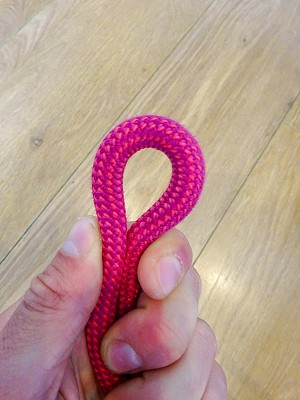




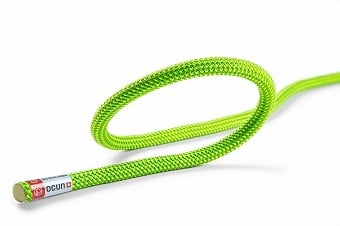
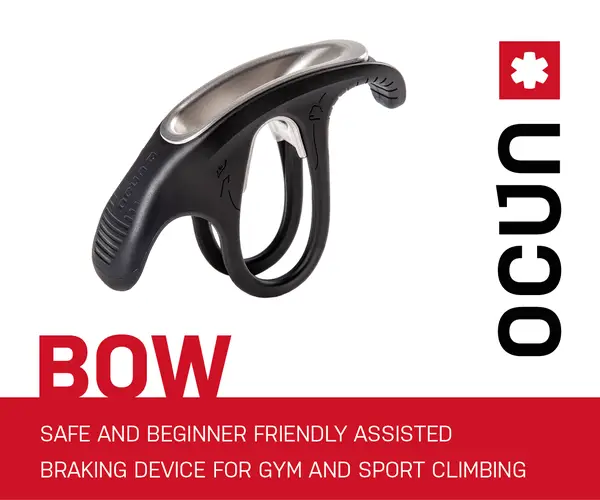








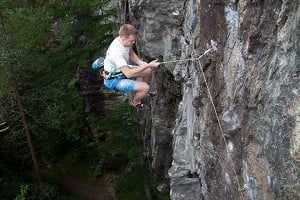
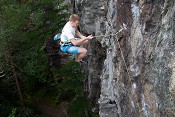


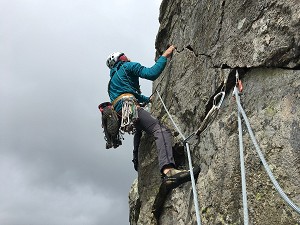
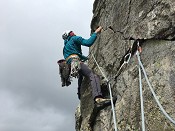




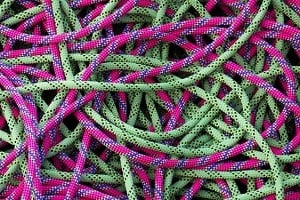



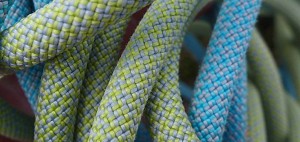

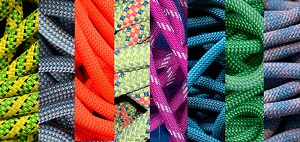



Comments
Sounds very similar to the Mammut Infinity Protect. Price is also almost the same (the Ocun is slights more expensive not considering any rebates). On the Ocun website it says it's PFC free and the Mammut is bluesign certified.
The Ocun seems to give a much softer catch (7.4 kN instead of 8.4). Information concerning the sheath percentage of the Ocun would be interesting.
I honestly find it quite strange to refer to 9.5 as 'skinny' considering the prevalence of much thinner single ropes on the market. At the mega skinny end the Beal Opera 8.5, Edelrid Canary 8.6 and Mammut Serenity 8.7 - granted these ropes are certainly more specialised towards alpine and high end redpointing (incidentally making some of the most bomber 'half' ropes that you can buy) but they do hold up well to extended use. I've a 50m Canary and it is absolutely brilliant for alpine and hard multipitch. I don't trash it projecting but it has certainly taken some abuse without complaining.
At the somewhat skinny end we have ropes like the Edelrid Swift 8.9, Beal Joker 9.1, Petzl Volta 9.2. These are all perfect redpoint ropes that can also take some serious abuse without getting trashed really quickly. Some climbing partners of mine use the Volta exclusively due to the durability vs handling.
In comparison, ropes like the Spirit, or the comparable Mammut Infinity are workhorses IMO. I have a strong feeling that aside from gym climbing, the days of the 9.8-10mm rope are numbered.
However, a slight caveat - this is a somewhat 'european' based opinion where a 60m rope is considered short and a route length of 40-50m is relatively common. I remember when climbing in the UK I very rarely needed more than a 50m rope, in which case the thicker diameter does present less disadvantages in comparison to the gains in durability.
Not really sure where I was going with this other than that I feel surprised these days when 9.5 counts as skinny.
Hi Misha,
I think you're right that a case could be made for a certain diameter of single rope being classified as 'skinny'.
However in this review I've just used my experience of the sport climbing ropes I've climbed with and, compared to those and the other ropes I see people using at the wall and crag in the UK, the Spirit seems skinny. In addition, it's slimmer than the ropes we tested in our Midrange Sport Ropes group-test so I suppose in the UKC hivemind it would also be considered skinny. Whether or not this anecdotal observation would justify it being classified as skinny in a comparison chart of different sport ropes is another matter but the Spirit does seem quite skinny to me!
I tend to use 9.8's at work these days for workhorse ropes. Something that'll take some abuse and get jugged on as well. They last well considering they get used daily. Rock Climbing Instructor courses, learn to lead courses, that kind of thing. I definitely consider these chunky ropes. Someone on my last course brought what I guess was 10.5-11mm, felt like we should be mooring a boat with it!
If I'm guiding on singles, like two clients on Dream or something I'll use 9.1's and think of these as just about skinny these days.
Personal climbing on singles my sport ropes are mostly 9.1mm but have a "fat" 9.5mm too.
That's a lot of waffle, to say I don't reckon 9.5mm is skinny..!
I thought I'd pitch in here, simply because it's an interesting discussion.
When it comes to skinny I almost think there's two tiers: there's the long/skinny ropes you're likely to use in Europe and there's the short/skinny ropes you're likely to use in the UK.
For the former, you'd realistically be expecting these to be in/around the 8.9-9.2mm marker. When it comes to falls/durability, because you're on longer pitches (i.e. >30-40m+) if you do fall it's likely to have quite a low impact force because there's a whole lot of rope out - as such it won't wear as quickly.
For the latter, I would say these are likely to be in.around the 9.2-9.5mm marker. If you're climbing routes places such as the Catwalk at Malham, LPT, or the Cornice then the routes are short + hard - hence you're likely to accelerate the wear dramatically. I must admit that I'm still using a 10mm for routes of this nature because of this: anything skinnier wears far too quickly.
Finally, in the eyes of your average climber I still think that the vast majority are buying 10mm singles and 8.5mm half ropes; however, this is changing and I would expect - were the sales research ever to be made avaialble - that the diameter has decreased (i.e. from 10.5mm and 9mm respectively), and will continue to decrease to something nearer 9.5-9.8mm and 8.2-8.3mm, over time.
Either way, I can see where Theo is coming from.